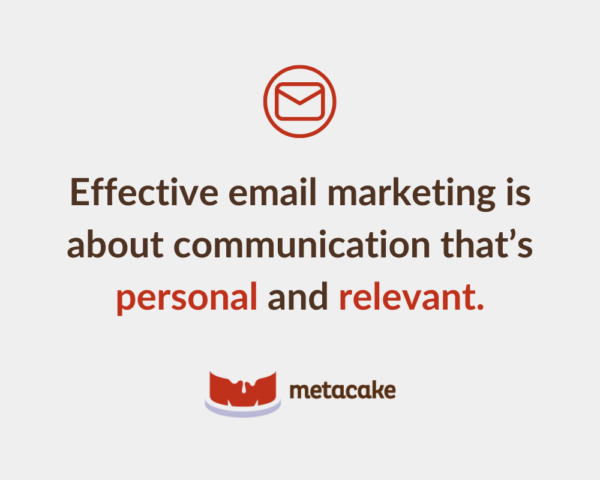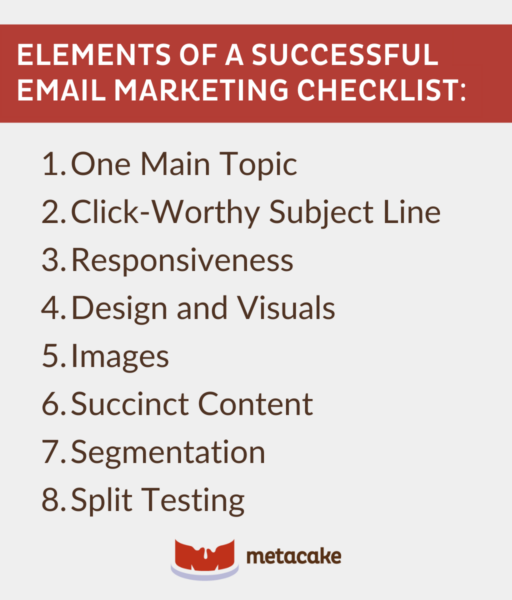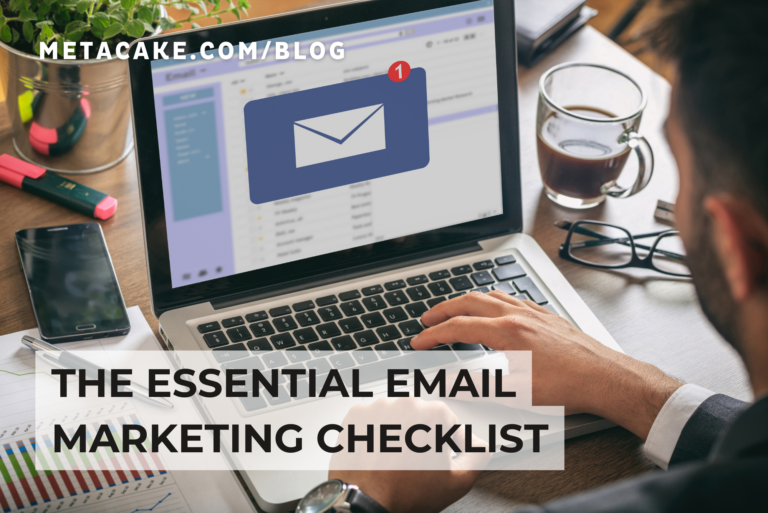Email is one of the most used marketing channels out there. It’s not that surprising, given its flexibility and cost-effectiveness — not to mention that they can be personalized and target specific audiences.
Some businesses take the caveman approach to email marketing by hurling as much garbage as possible against the cave wall and seeing what sticks.
This approach leads to irritated customers and a failing email marketing campaign.
Effective email marketing is about communication that’s personal and relevant. What do you want to communicate? What kind of content is best suited for certain segments of your email list? When and how often should you email?

What’s the right balance between helping and selling?
We have the answers for you in our email marketing checklist. Come check it out!

Elements of a Successful Email Marketing Checklist
Nine times out of 10, you should be sending useful, helpful content before you try to sell something.
Once you get all of these details squared away, you can start working on the actual email. Run through this essential checklist for every email before hitting “send.”
One Main Topic
Keep it simple, stupid.
That principle was introduced by the U.S. Navy in 1960, and it still applies to just about everything today.
Every email should have one main purpose. Instead of trying to stuff more into your email, think about what you can remove. This improves clarity.
Emails should be filet mignon, not an overstuffed sausage.
This doesn’t mean you can’t include a secondary message or promotion in your email, but make sure it’s visually clear what the priority is. You don’t want your readers to be overwhelmed the moment they lay eyes on your email.
Click-Worthy Subject Line
Once you’ve drilled down to one main topic, you need a subject line that tells the recipient, in the simplest of terms, why that topic is worth their time.
Whether you want to drive home a compelling offer or preview some helpful information, your first goal is to get them to click. That’s it.
So make sure your subject line is catchy and enticing, but also clear. While the goal is to get your subscribers to open the email, there’s no sense in misleading them.
An open email is worth nothing if the reader isn’t actually interested in the content provided.
Responsiveness
There are more than 7.1 billion mobile users in the world, and many of them are reading emails on those mobile devices. If you don’t optimize for mobile, do you really think people will waste time pinching, zooming, and rotating just to make your email readable?
Hitting the delete button is much easier. And a more likely result.
Responsive email is just like a responsive website. It should respond to the needs of the reader by automatically adapting to the size of the screen.
Design and Visuals
Most people want to overdesign their emails, which muddies the user experience.
Keep the design simple and clean. Make sure the text is big enough to read.
More often than not, a white background with minimalist design elements and visuals is your email’s best friend.
Images
Use as few images as possible. Some email platforms will automatically strike out any images, so you should make sure your email will still work without them.
Only use images if they’ll enhance the user experience and make people more likely to click.
Alt text is another option to think about.
Alt text offers a textual description of an image. It’s designed for readers with visual impairments or those using assistive technology to read the image’s content.
While images may not load because the email recipient has restricted your photos, alt text allows you to display text descriptions even when the images don’t render properly.
Succinct Content
Your email isn’t a blog post or a newsletter. The email is intended to get the recipient to click through to your blog post, newsletter, landing page, or wherever else your content lives.
Provide a summary or a teaser that gets people to your website, where they can consume your content in its entirety.
Cutting out filler words and phrases can streamline your emails and keep things simple. Plus, your message won’t lose substance.
Here are some examples of filler words you can do without:
- Essentially
- Basically
- Just
- Very
- Really
- I think
- I mean
- Sort of
Segmentation
When you use segmentation, it means you know something about the people on your email list. That’s why you segment your list and tailor your message in the first place.
Are you sending emails to VIP-level customers or people who’ve never made a purchase? These are two very different groups.
How did you acquire their email address? Facebook? A form on your website? A contest or promotion?
Tweak your message for each segment, or develop completely unique emails.
Split Testing
Any marketer who claims to know exactly what approach will work best with every segment of your email list is feeding you a load of rubbish.
Testing makes email marketing more effective. Period.
For your largest segments, consider sending multiple emails and seeing which approach performs best. You can implement A/B testing on different subject lines, messaging, and calls-to-action until you come up with the best formula.
Final Thoughts
Effective emails form the foundation of successful ecommerce business communication. By following this email marketing checklist, you can craft emails that are successful, engaging, and compelling.
From creating an appealing subject line to closing with a powerful CTA, each component plays a crucial role in creating an effective email.
With so much business happening via email, it’s more necessary than ever to master this vital communication tool. By implementing these elements, you can generate emails that provide results and help you achieve your business goals.
If you need help putting this checklist to use, feel free to reach out; our team is waiting!
